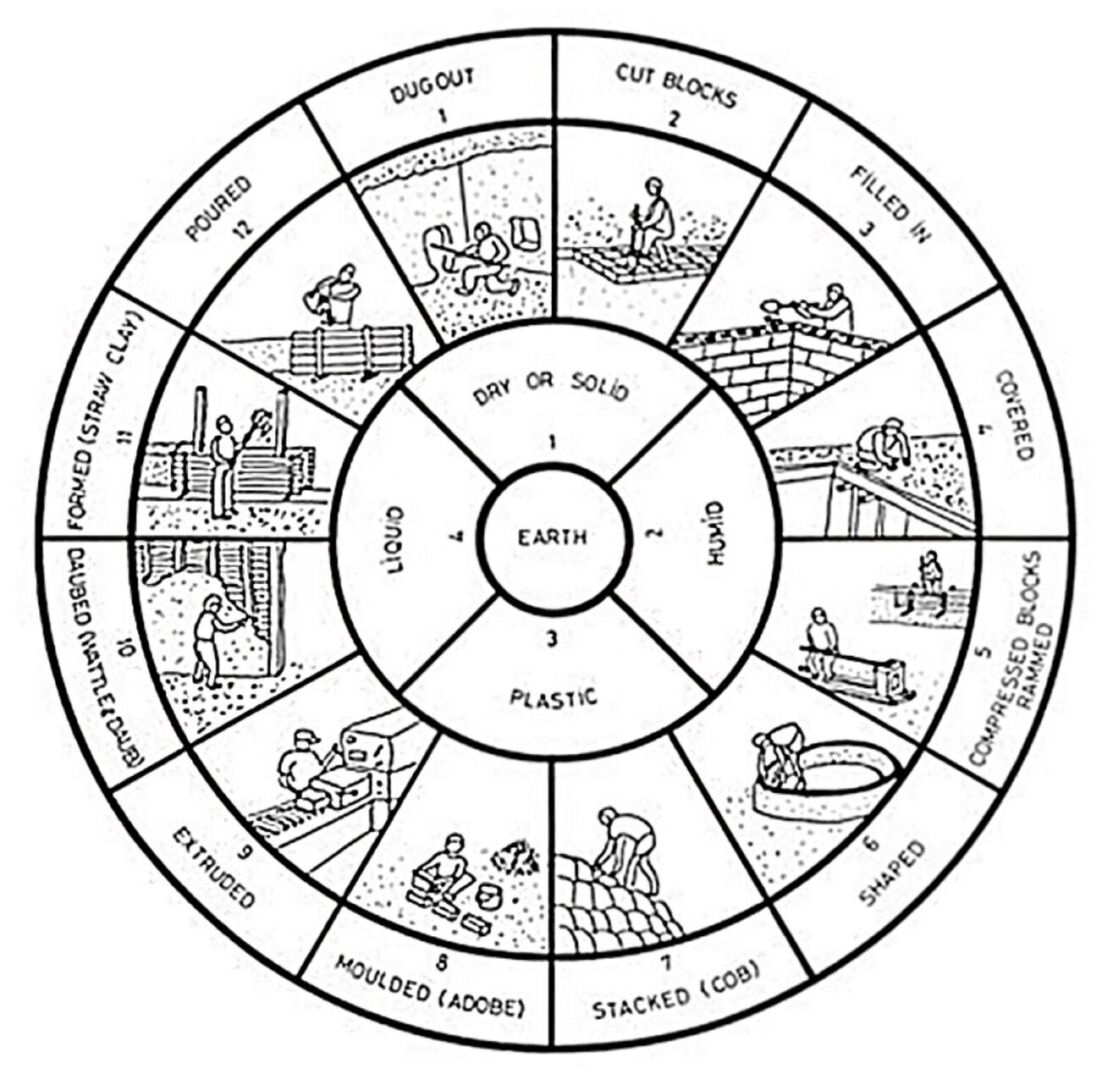
We work
with earth.
Grond works with raw earth: an unprocessed and unfired mix of clay, sand and gravel. No cement, concrete or chemicals are needed to make raw earth strong and durable.
Besides its solidity (yes, it is load-bearing!), raw earth holds remarkable ecological properties and creates a healthy, comfortable environment. This makes raw earth a viable alternative for lots of heavily industrialized and energy-consuming construction materials. At the same time, the natural aesthetic gives it a timeless and delicate look.
The range of technical and architectural possibilities of raw earth is extremely large and varied. The wheel of CRAterre summarizes 12 techniques to process earth. Over the years, Grond has rediscovered, learned and applied many of the techniques, both in architecture and design.
Discover how Grond works with earth:
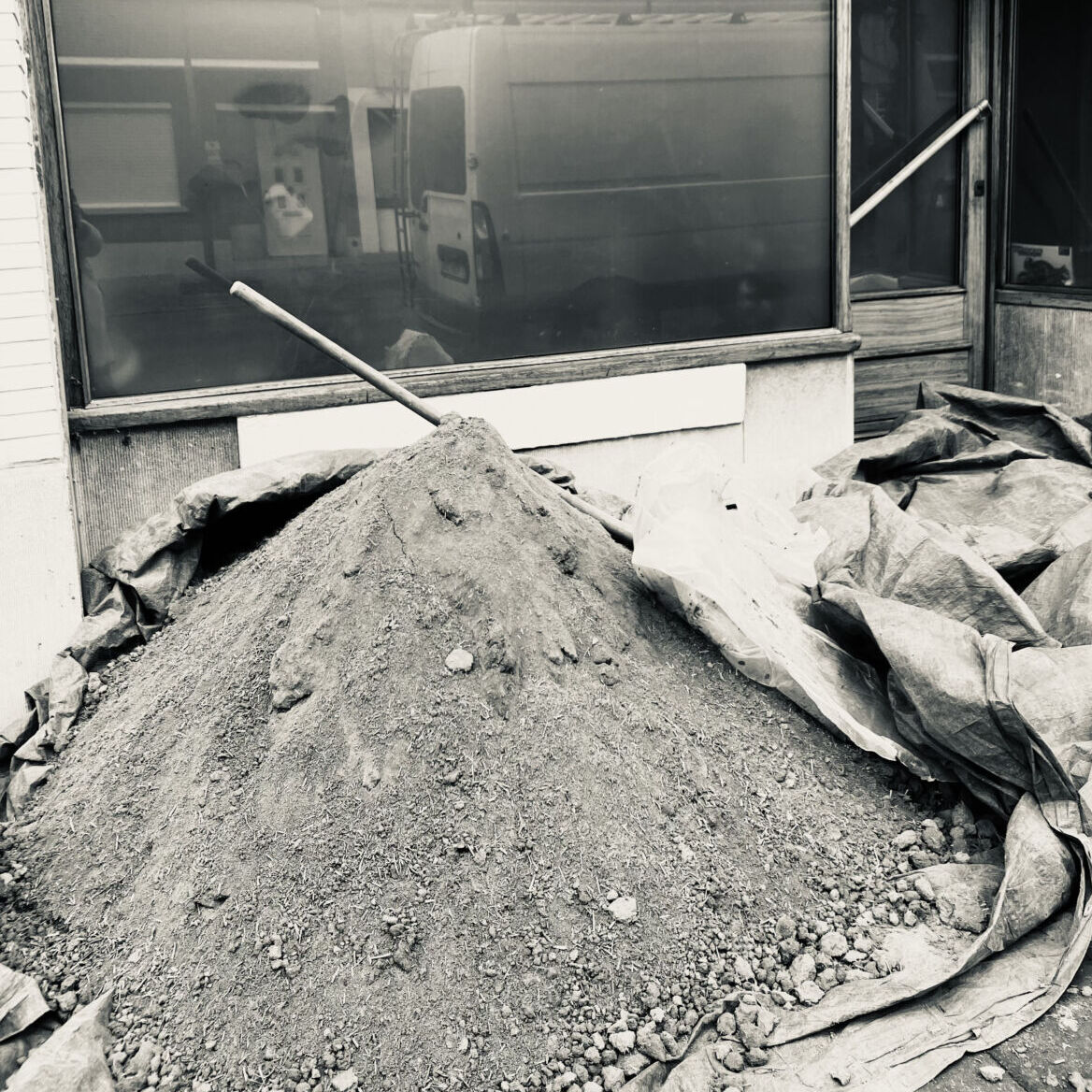
We work with humid earth
Rammed earth, Compressed Earth Blocks (CEB),...We transform loose, humid earth into a dense, heavy and strong structure by extreme compression. Grond provides the skilled craftsmanship for rammed earth floors. Approx. 13,5cm of earth is compressed to a floor of 8cm, then treated, sanded and protected. These floors are praised for their warm and tactile surface and ecological qualities. Rammed earth walls require a stable formwork. Walls are built up by ramming loose earth into layers of approx. 10cm.
With compressed or rammed earth Grond also design objects, furniture and installations.
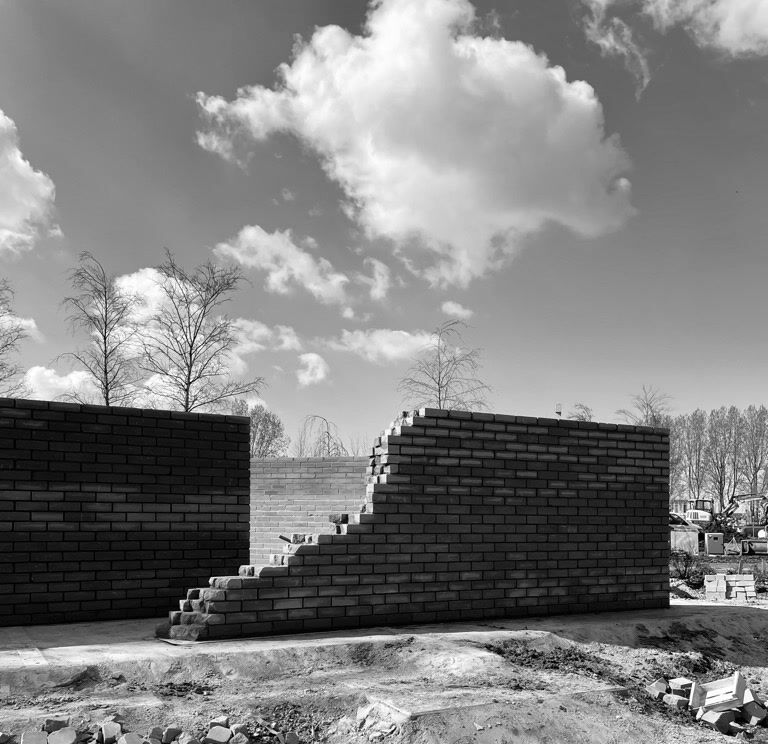
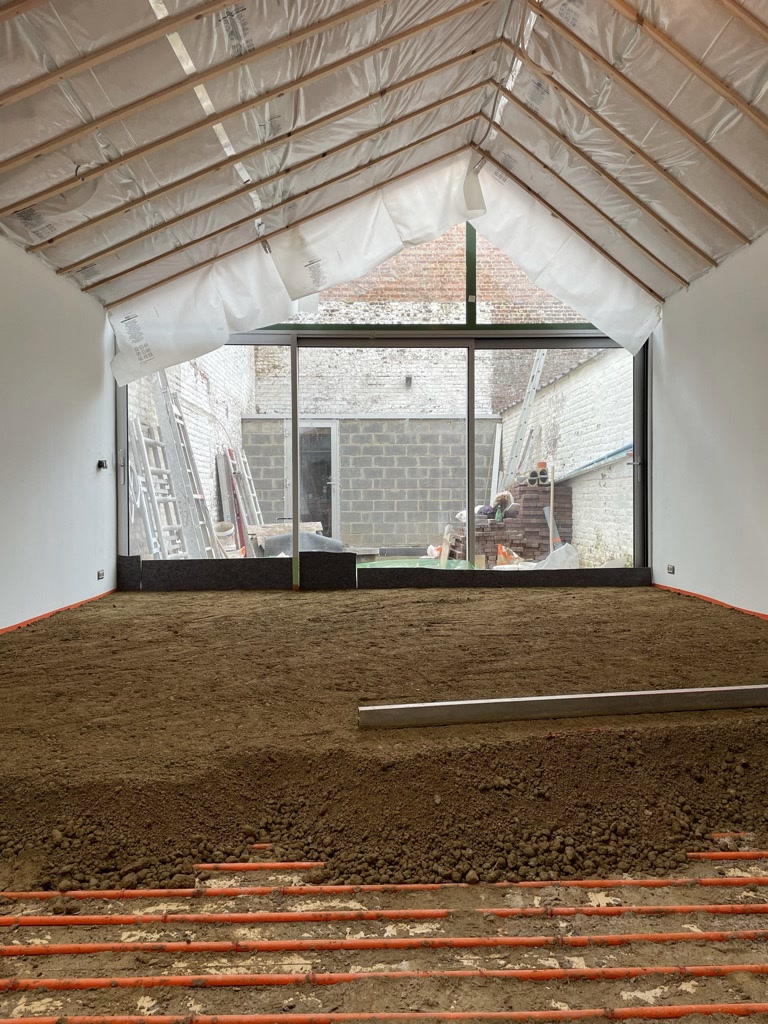
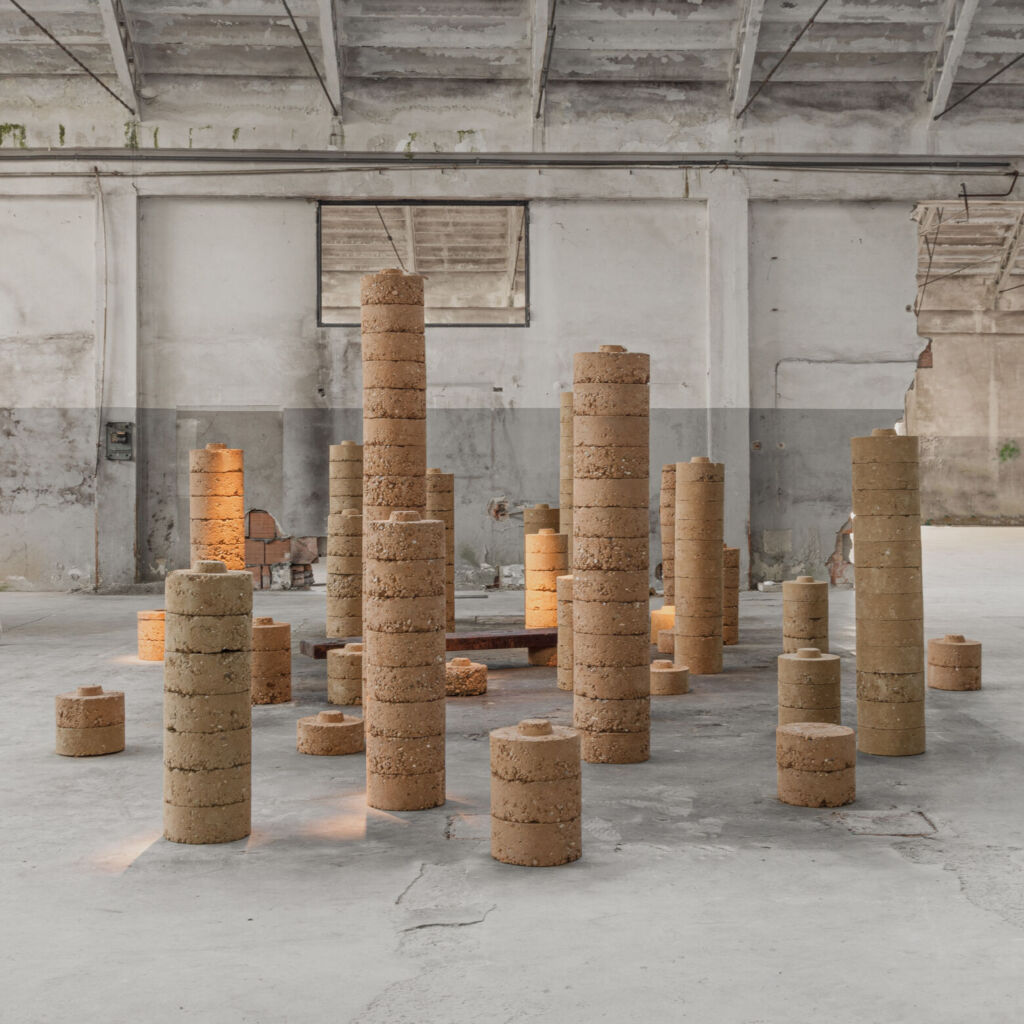
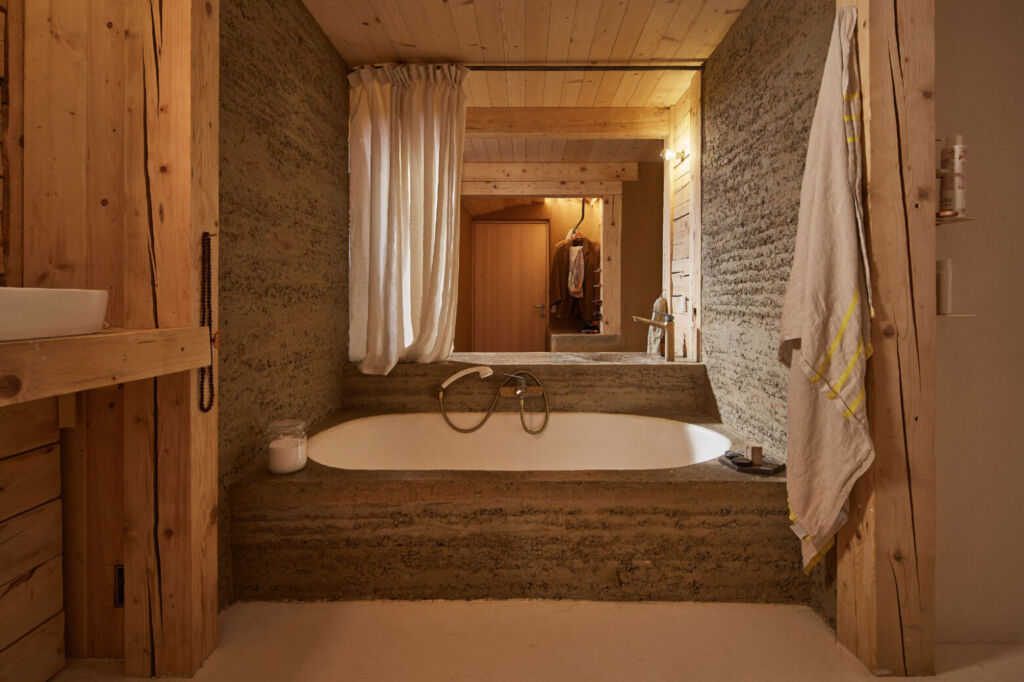
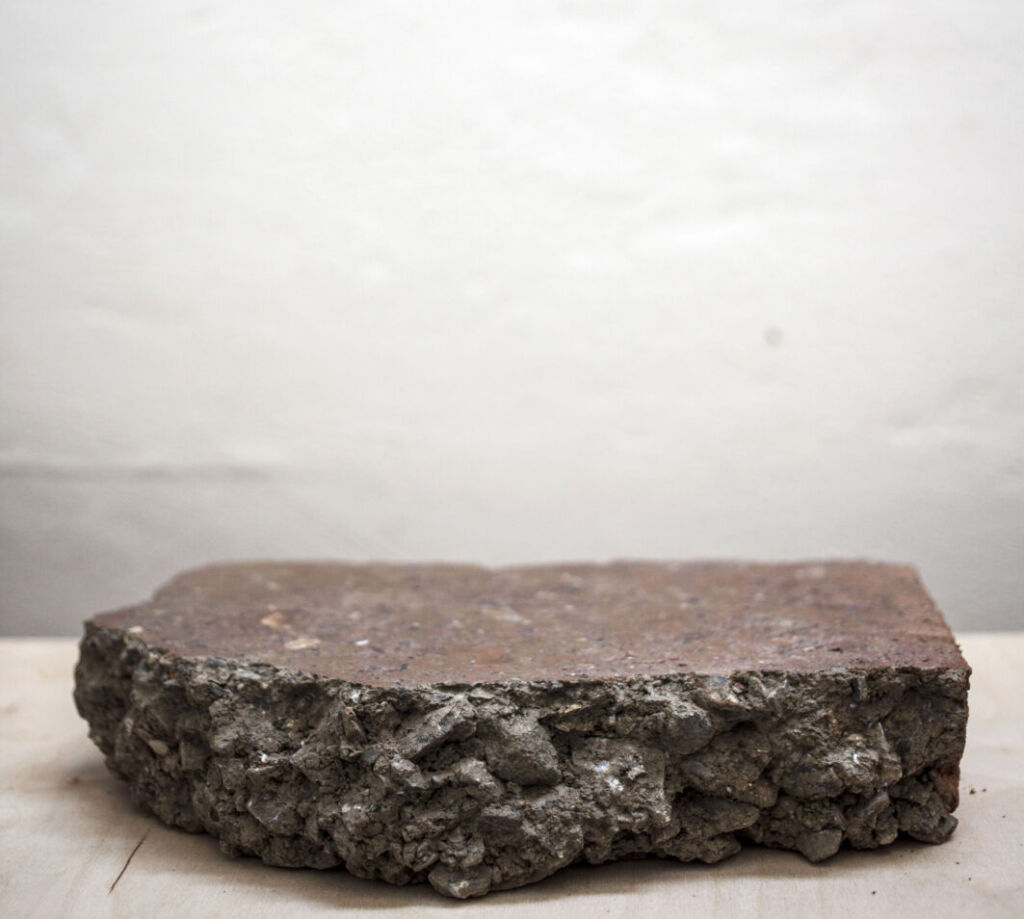
We work with liquid earth
Clay plaster, Wattle and daub, Liquid earth,...We apply clay to walls, ceilings or other structures in 2 to 4 layers on roughly any type of substrate. After application the mix is evened out with or without a specific decorative texture. The aesthetic options are limitless and can vary both in texture and colour.
The textures of clay plaster vary from smooth to rough but are never glossy. We apply clay plaster in standard finishing techniques but also develop special and highly decorative finishing techniques (sometimes even with funky additives such as shells, copper, ashes, pearls, algae etc). The most important Grond textures:
- Sponge technique
A standard application technique creating a nuanced surface. Depending on the type of clay, small grains of sand can be made visible which make a natural-looking surface with a bit of depth and texture. - Talocha technique
An elegant finishing technique where surfaces are sculpted with Japanese knives. Through the sculpting of the clay with the knives, a smooth and subtle texture appears. - Rakud technique
A rough look with long, horizontal or vertical engraved lines. It creates depth, movement and transforms a static surface into something eventful. - Berserker technique
A wild finish performed with the big machines. Two layers of a rough (crazy-coloured) clay mix are sprayed onto the surface. Some of the rough areas are polished with fine knives.
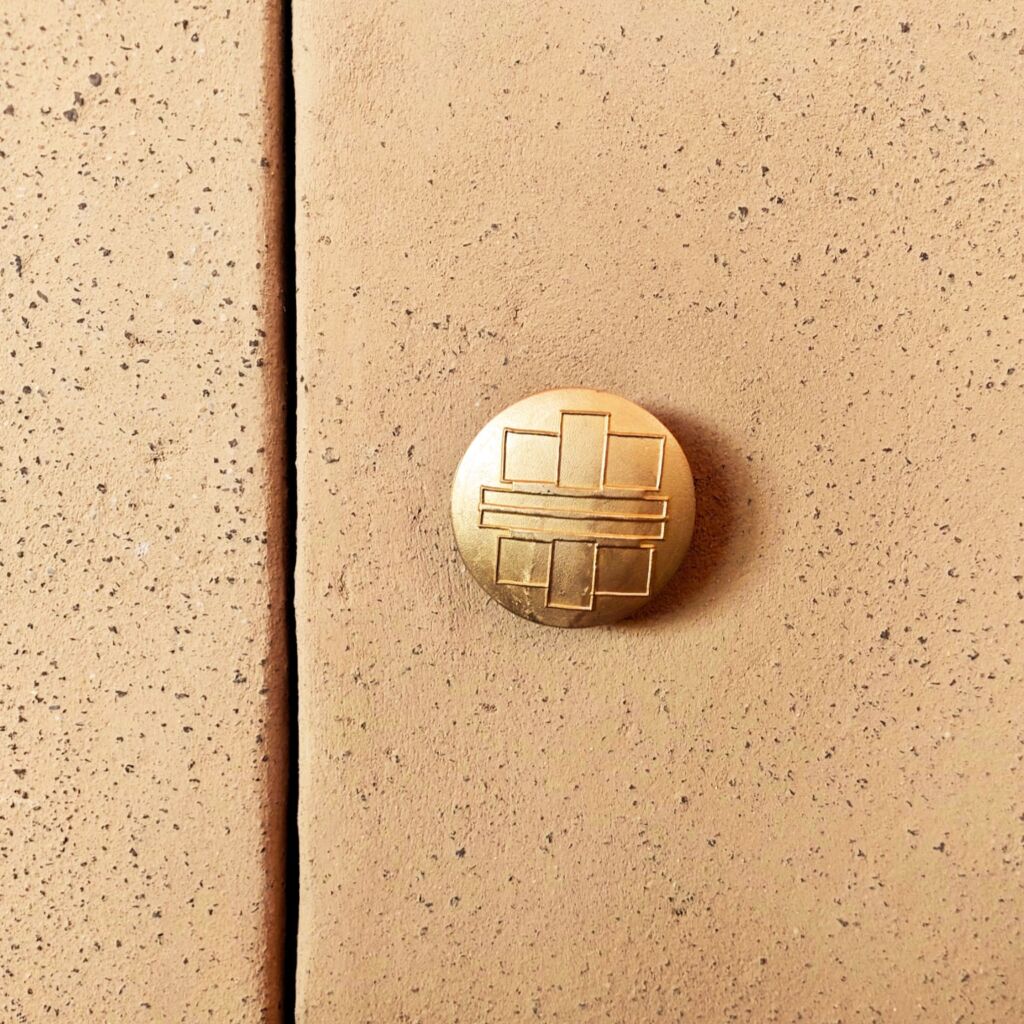
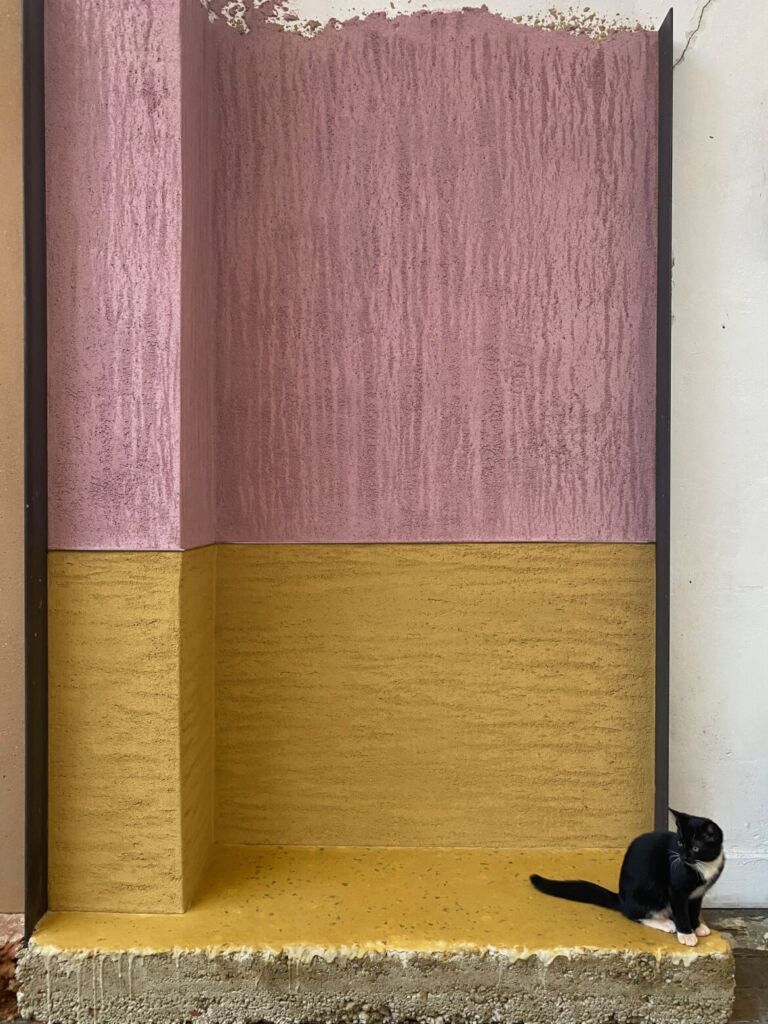
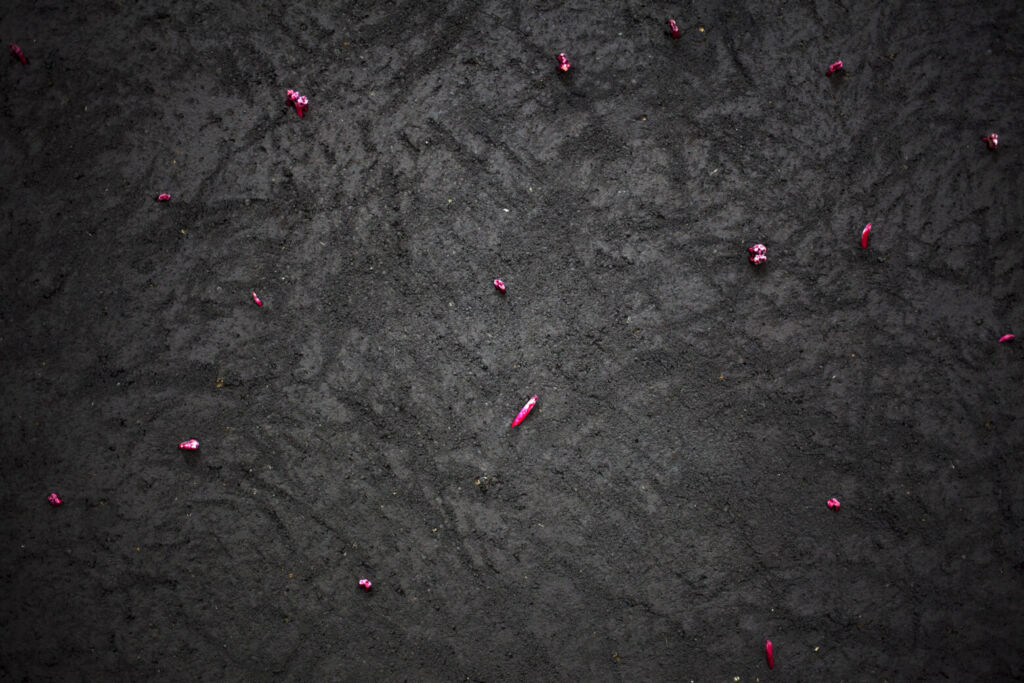
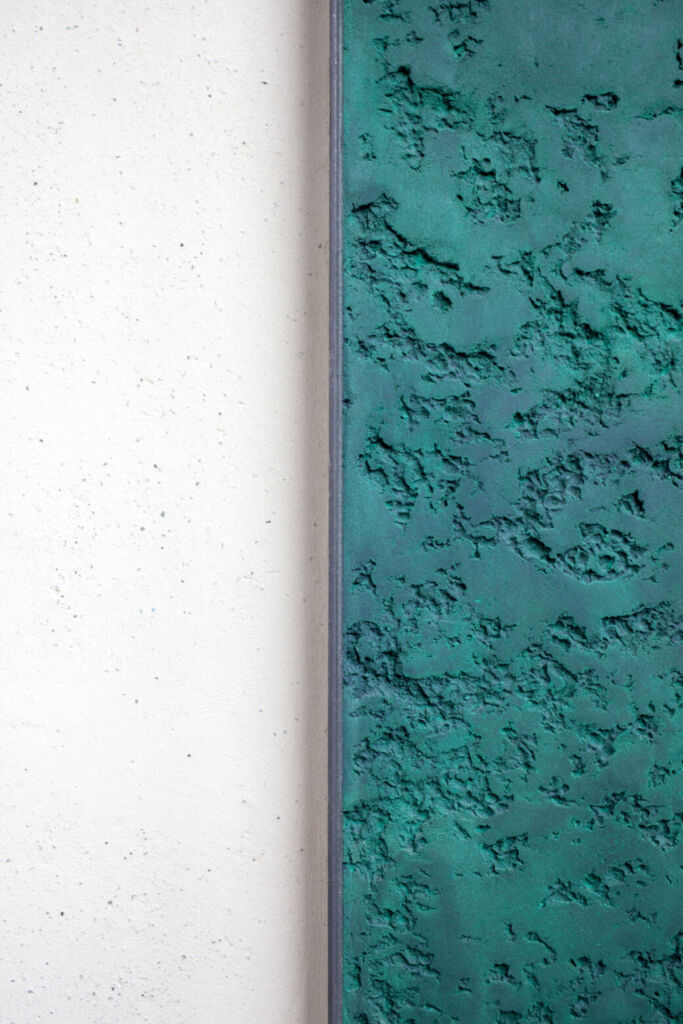
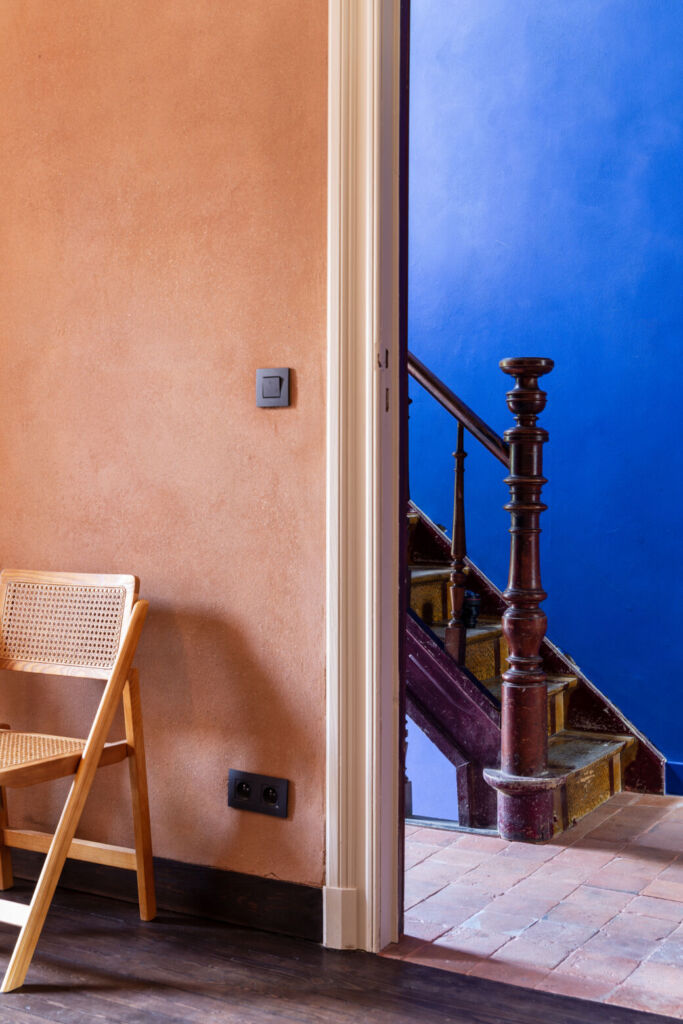
We work with plastic earth
Adobe bricks, Extruded clay, Cob,...Somewhere between dry and liquid earth, we end up with plastic earth. Soft, workable and flexible clay is used to make all kinds of design and artworks. The process of pushing clay through a machine to form specific designs is called extrusion. We used this technique to design our tiles. Grond also works with adobe bricks and cob. Adobe bricks exist out of clay, sand and silt and organic material like straw to bind. This mixture is pressed in a mold and air-dried. Walls and structures in cob are made by piling a shapeable earth mix in layers onto a surface.
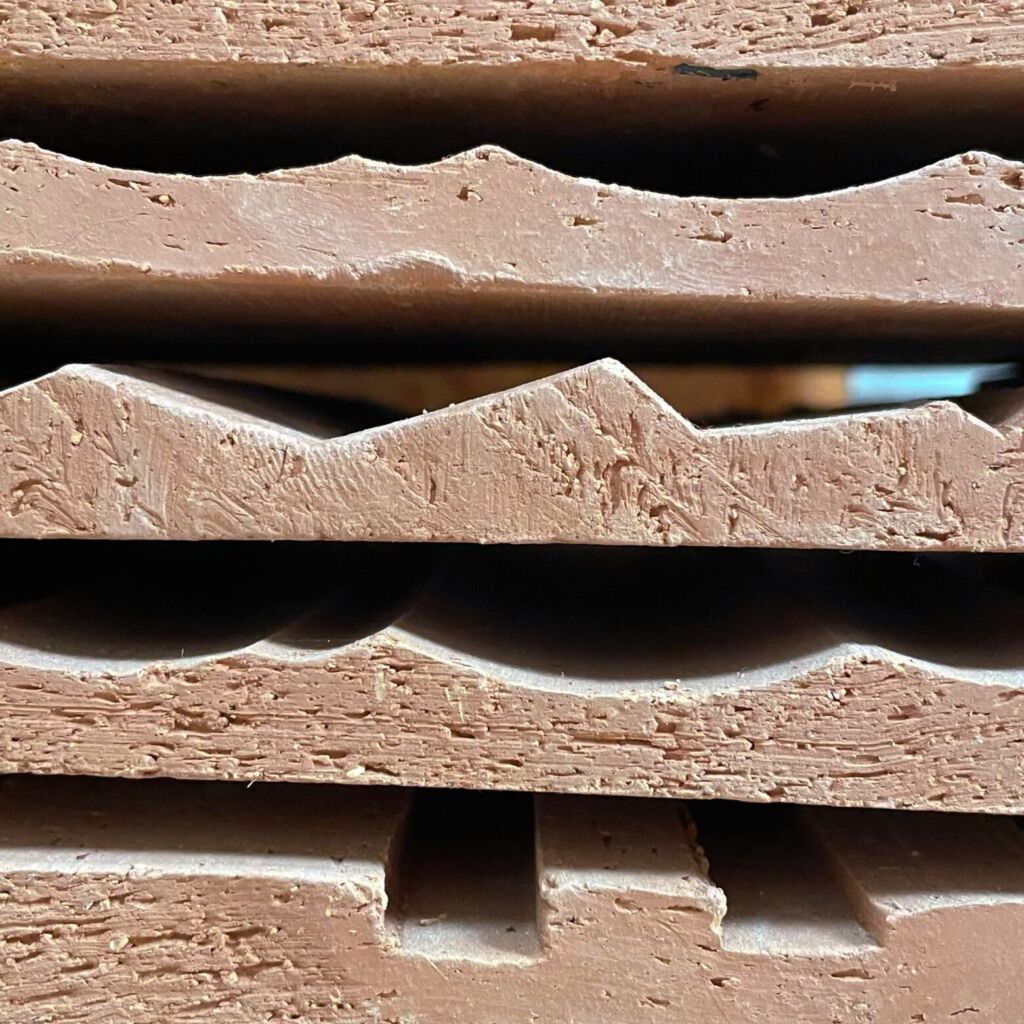
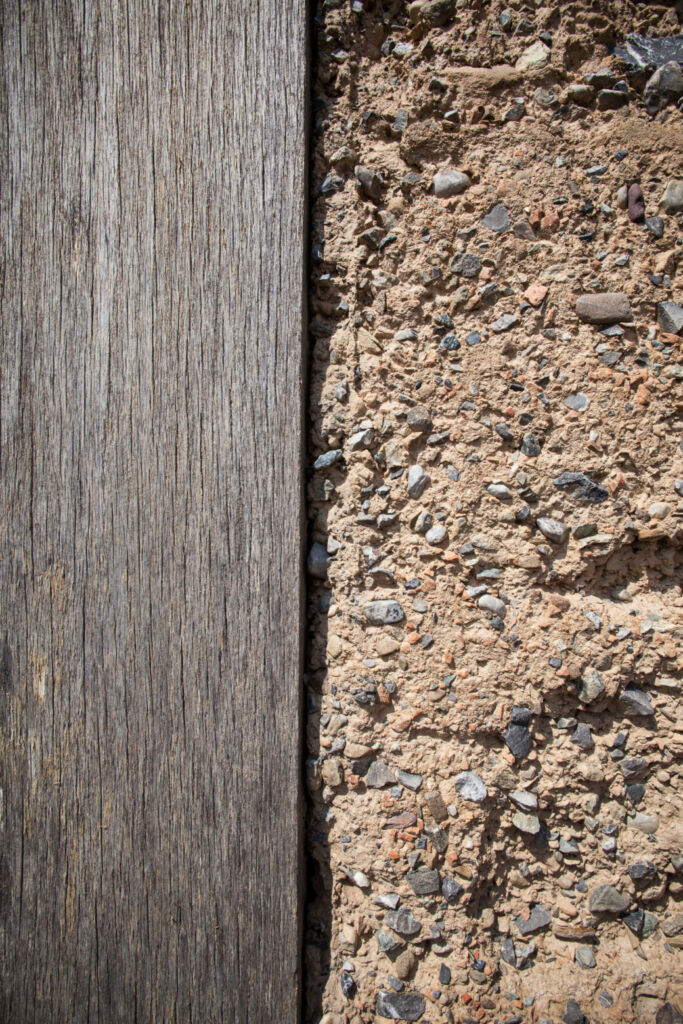
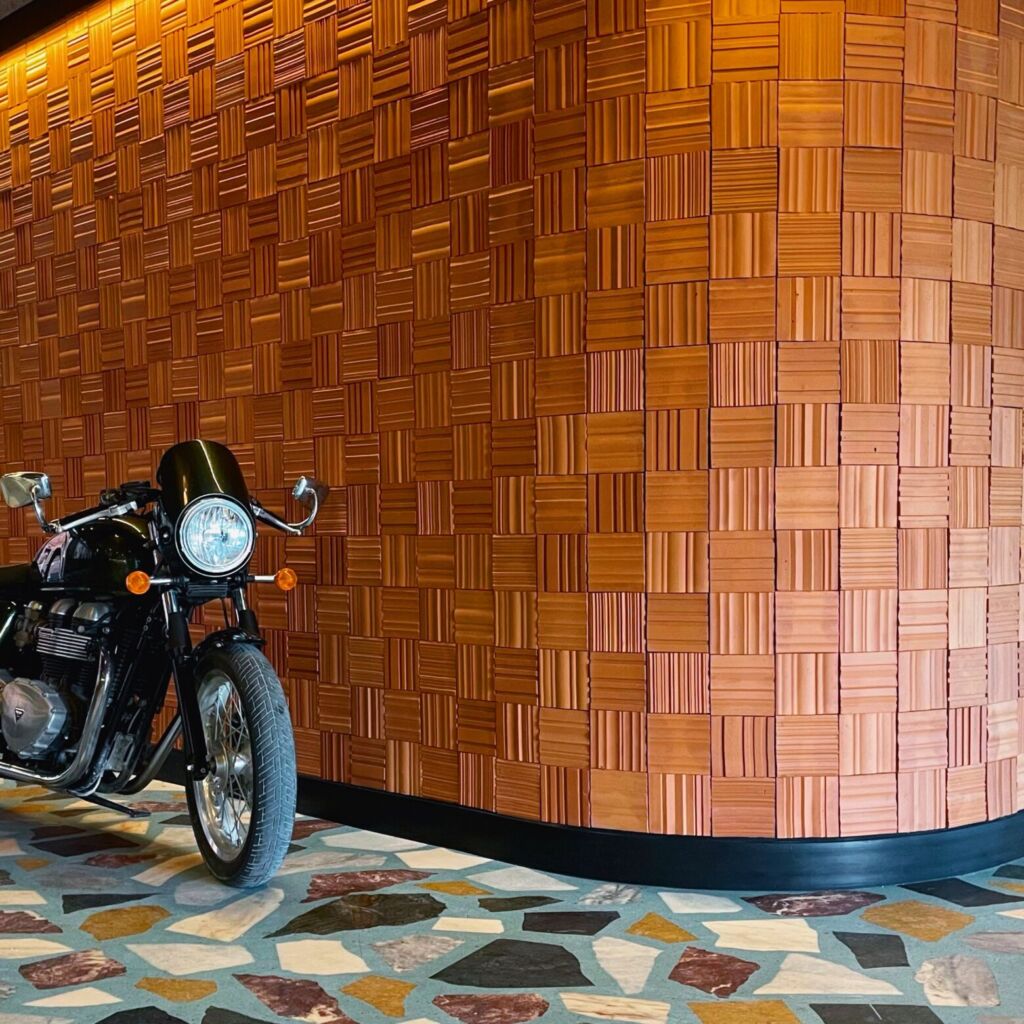
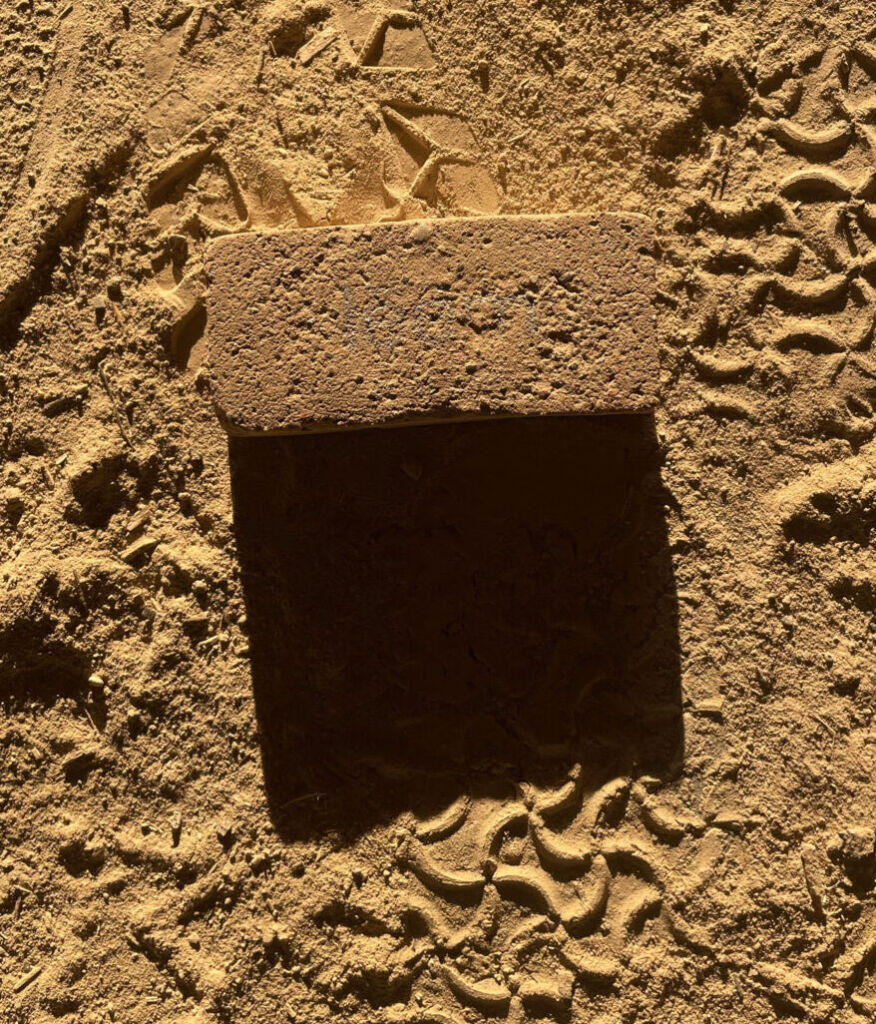
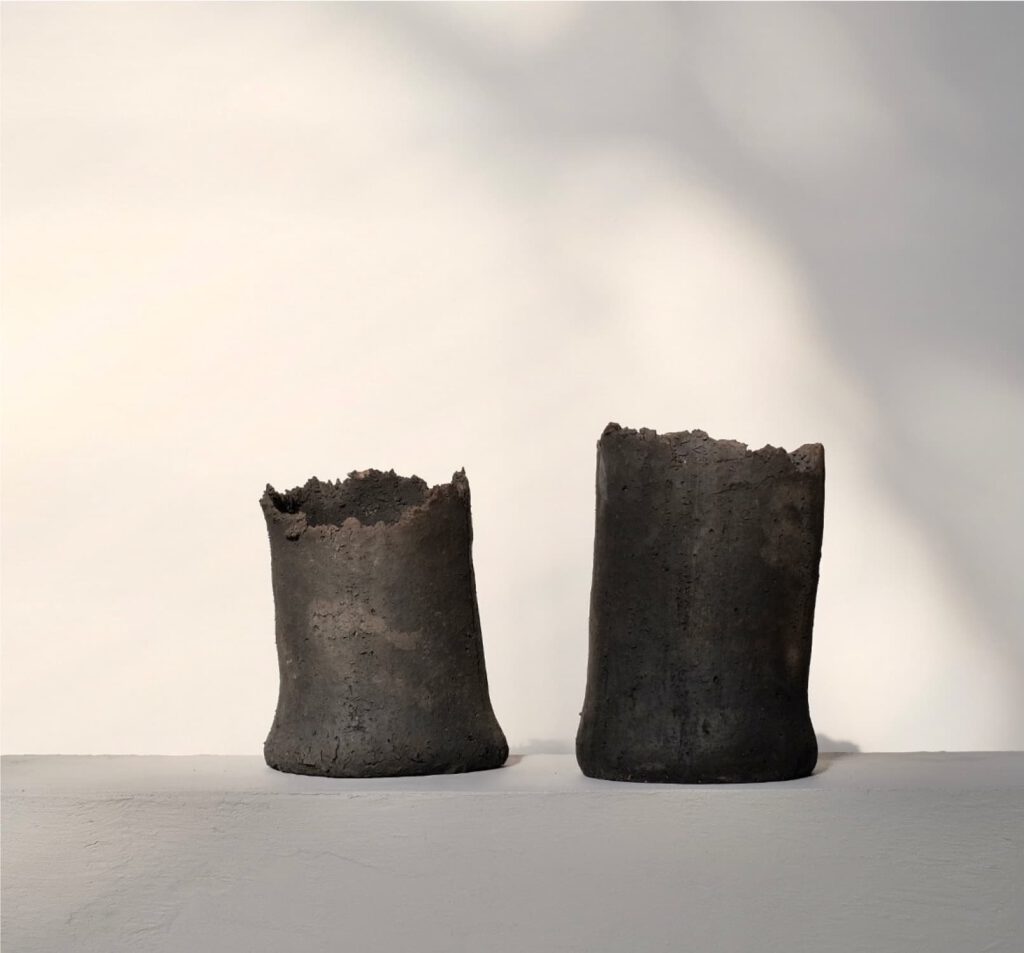
JAM Hotel